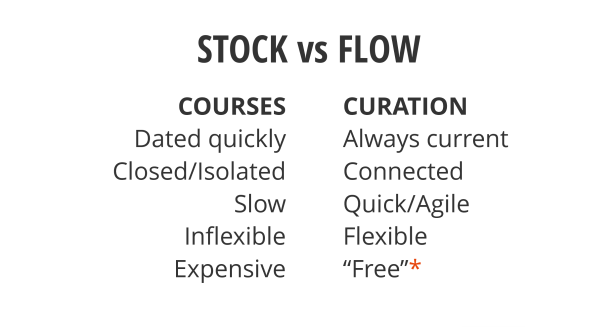ATD Blog
Is Curation the Cure to Content Overload?
Wed Jan 02 2019

Think about it. Isn’t a lot of the work L&D already does really just a form of curation? The process of creating a course is virtually the same as the curation process. You start by identifying your goals and doing some analysis of your audience. You identify topics, and that leads you to a collection of resources from which you cull the best information to present in the proper context.
“Curation is using your expertise in a field to gather great content around a specific theme and present that content in a way that will educate others,” explains Stephanie Hatch Leishman, former MIT social media strategist, in the MIT Connect blog post “Curated Content About Curated Content.”
Why You Should Curate
There are several reasons you should consider adding curation to your skill set. First, the pace of change today is faster than ever and the lifespan of skills and information is getting shorter and shorter. The average shelf life of a business competency has dropped from 30 years in 1984 to five years in 2014. To be successful we must learn more things and do it faster.
The figure below offers a brief comparison between courses and curation.

Scaling Organizational Learning
I’m a strong believer that curation can help organizations increase the amount and speed of learning that takes place. In turn, this makes the organization smarter and more agile. We should be teaching people how to be curators as part of their Personal Knowledge Mastery process.
“Organizations can’t scale learning when only a few people create content for the many to consume,” says Mark Britz, senior manager of programming for the eLearning Guild. “The expectation has to change to where many people create and consume, learning together continuously.”
Getting Started With Curation
If you can answer these three questions from the perspective of the people you are curating for, you will be heading in the right direction:
· What are their goals and pain points?
· What information do they want?
· What awareness do they need?
The figure below breaks this down even further to help you get started with your curation efforts.

What’s more, I’ve created a curation worksheet to help guide anyone looking to get started with developing their own personal curation process.
Bottom line: Most people are familiar with the feeling of drinking from the fire hose when consuming content online. Great curators are ruthlessly efficient in the way they take in information. The key to their success is setting up a process that maximizes the signal and reduces the noise. For me, Feedly is the foundational piece of the puzzle.
The video below offers a brief overview of how my curation process works.
Finally, here are a few tools for getting started with each step of the process:
I’d love to hear what your curation process is, too! Join me at ATD TechKnowledge 2019 for the session, Wired, Not Tired—Is Curation the Cure for What Ails You?
